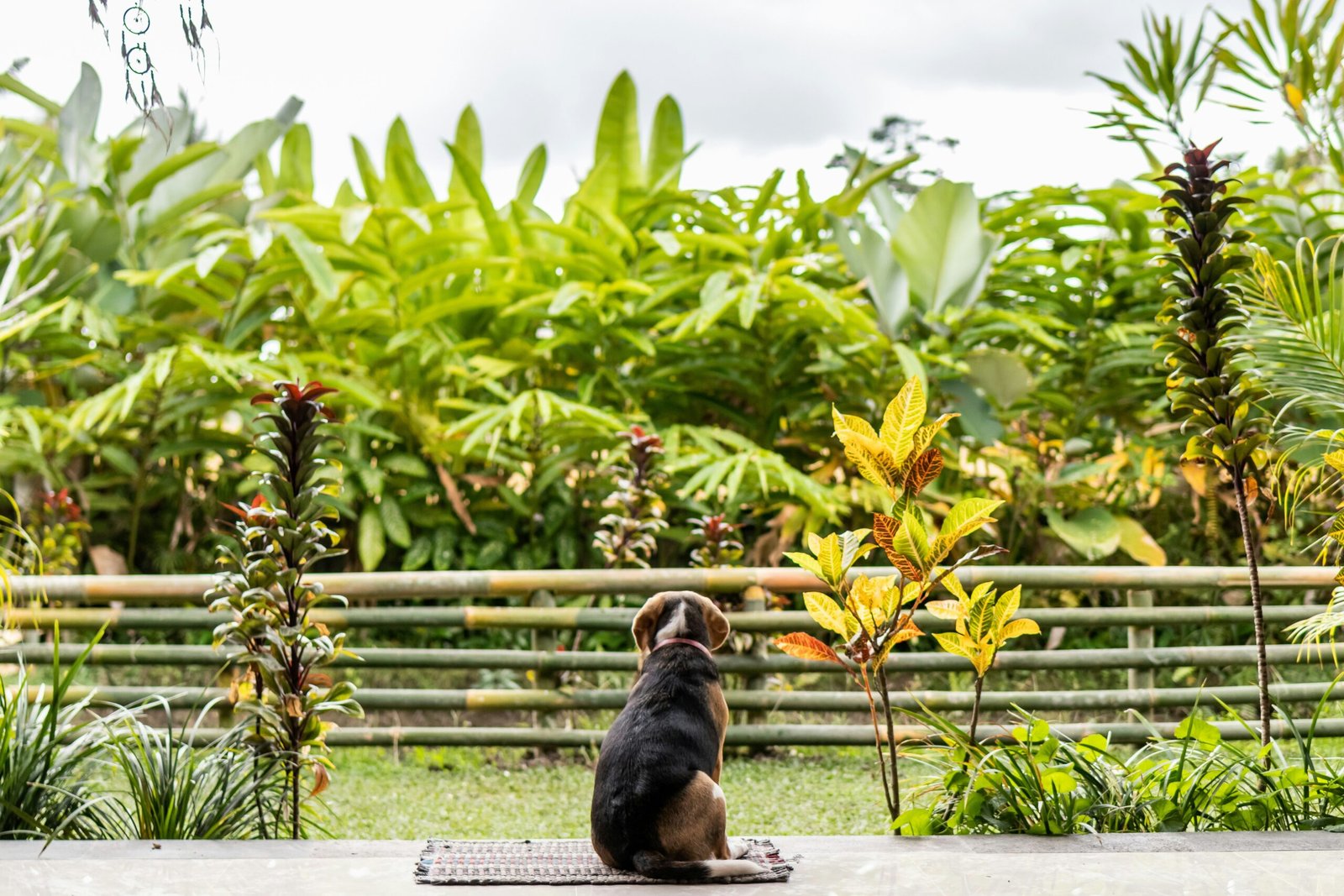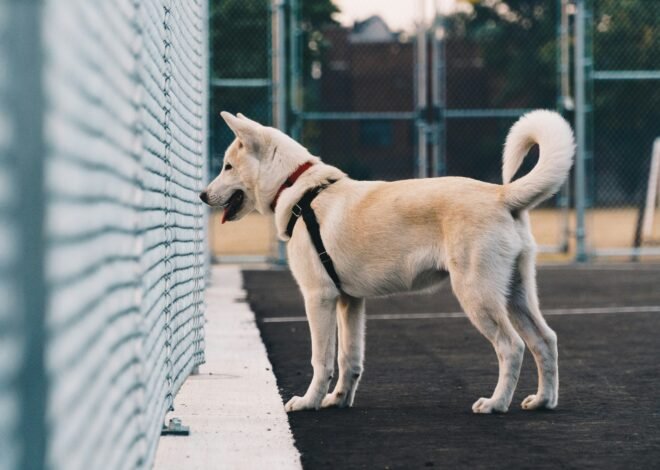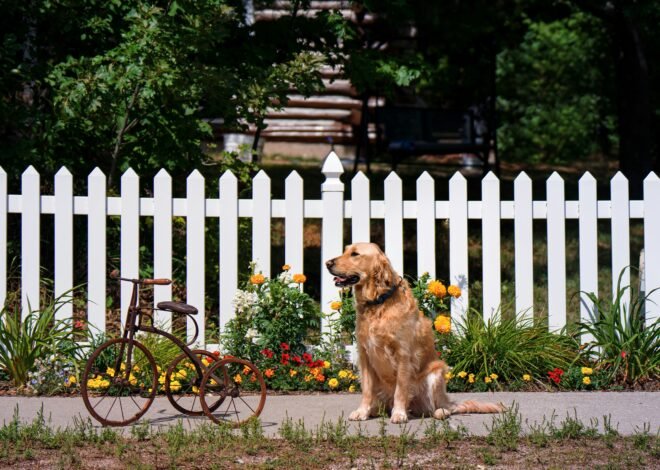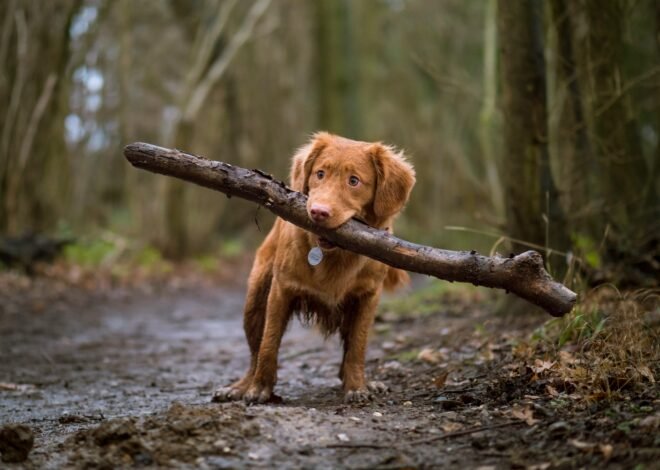
Innovative DIY Dog Fence Ideas
Creating a safe and secure space for your dog is a top priority for any pet owner. While traditional fences are an effective solution, they can be expensive and may not always fit the aesthetic of your yard or rental property. DIY dog fences offer a creative, cost effective alternative that allows you to customize the space to meet your needs and preferences. Here, we explore various innovative DIY dog fence ideas to help you find the perfect solution for pet containment.
- Pallet Dog Fence
Materials Needed:
- Wooden pallets
- Nails or screws
- Hammer or screwdriver
- Paint or wood sealant (optional)
Instructions:
Wooden pallets are an excellent resource for building a sturdy, rustic dog fence. Start by sourcing pallets from local hardware stores or recycling centers. Arrange the pallets vertically, side by side, to create the fence. Secure them together using nails or screws. For added durability and weather resistance, you can paint or seal the pallets. This fence is not only cost effective but also environmentally friendly, as it reuses materials that would otherwise go to waste.
Benefits:
- Affordable: Pallets are often free or very inexpensive.
- Sustainable: Using recycled materials is ecofriendly.
- Customizable: You can paint or stain the pallets to match your yard’s decor.
- Bamboo Dog Fence
Materials Needed:
- Bamboo poles
- Twine or zip ties
- Garden stakes
- Wire cutters
Instructions:
A bamboo dog fence is both functional and aesthetically pleasing. Bamboo poles can be found at garden centers or online. Begin by driving garden stakes into the ground at regular intervals along the desired fence line. Attach the bamboo poles to the stakes using twine or zip ties, making sure they are secure. This type of fence blends well with natural surroundings and is ideal for creating a serene backyard environment.
Benefits:
- Aesthetic Appeal: Bamboo adds a natural, attractive look to your yard.
- Eco Friendly: Bamboo is a renewable resource.
- Easy to Install: Simple to set up with minimal tools.
- PVC Pipe Dog Fence
Materials Needed:
- PVC pipes
- PVC connectors
- Saw
- Zip ties or screws
Instructions:
PVC pipes are lightweight, durable, and easy to work with, making them a great choice for a DIY dog fence. Cut the PVC pipes to the desired length using a saw. Connect the pipes using PVC connectors to form a fence structure. Secure the structure with zip ties or screws to ensure stability. You can customize the height and design of the fence to suit your specific needs. This type of fence is perfect for both indoor and outdoor use.
Benefits:
- Durable: Resistant to weather and wear.
- Customizable: Easy to adjust the size and shape.
- Portable: Can be dismantled and moved if necessary.
- Garden Netting Dog Fence
Materials Needed:
- Garden netting
- Wooden or metal posts
- Zip ties or wire
- Hammer
Instructions:
Garden netting is a simple and inexpensive solution for creating a temporary dog fence. Drive wooden or metal posts into the ground at regular intervals around the area you want to fence. Attach the garden netting to the posts using zip ties or wire. This type of fence is easy to install and remove, making it perfect for renters or those looking for a nonpermanent solution. It’s also useful for keeping dogs out of specific areas, like flower beds or vegetable gardens.
Benefits:
- Affordable: Inexpensive and easy to find.
- Flexible: Can be used in various configurations.
- Nonpermanent: Ideal for temporary setups or rental properties.
- Lattice Dog Fence
Materials Needed:
- Wooden lattice panels
- Posts
- Screws or nails
- Paint or stain (optional)
Instructions:
Wooden lattice panels are a decorative and functional option for a DIY dog fence. Start by installing posts at the corners and along the perimeter of the area you want to fence. Attach the lattice panels to the posts using screws or nails. For a polished look, you can paint or stain the lattice. This type of fence provides a good balance of visibility and containment, allowing your dog to see through while remaining secure.
Benefits:
- Decorative: Adds a touch of style to your yard.
- Semi Transparent: Allows visibility through the fence.
- Customizable: Can be painted or stained to match your decor.
- Chicken Wire Dog Fence
Materials Needed:
- Chicken wire
- Wooden or metal posts
- Staples or wire
- Pliers
Instructions:
Chicken wire is a versatile and inexpensive material for building a dog fence. Begin by installing posts at regular intervals around the area to be fenced. Attach the chicken wire to the posts using staples or wire, ensuring it is pulled tight to prevent sagging. Use pliers to bend and secure the wire ends. This type of fence is lightweight and easy to install, making it a great option for small dogs or temporary setups.
Benefits:
- Cost Effective: Chicken wire is cheap and readily available.
- Lightweight: Easy to handle and install.
- Versatile: Suitable for various applications and configurations.
- Repurposed Furniture Dog Fence
Materials Needed:
- Old doors, windows, or shutters
- Hinges or brackets
- Screws or nails
- Paint (optional)
Instructions:
Repurposing old furniture is a creative way to build a unique dog fence. Collect old doors, windows, or shutters from thrift stores or salvage yards. Arrange them in a row to form a fence, and secure them together with hinges or brackets. Attach the fence to posts or other sturdy supports to ensure stability. For a cohesive look, you can paint the repurposed items to match your outdoor décor. This type of fence adds character and charm to your yard while providing a functional barrier for your dog.
Benefits:
- Unique: Creates a one of a kind fence.
- Sustainable: Reuses materials that might otherwise be discarded.
- Decorative: Adds an artistic touch to your yard.
- Livestock Panels Dog Fence
Materials Needed:
- Livestock panels
- Metal Tposts
- Tpost driver
- Zip ties or wire
Instructions:
Livestock panels are heavy duty, prefabricated metal fencing panels designed for containing animals. They are perfect for creating a strong, durable dog fence. Start by driving Tposts into the ground at regular intervals along the desired fence line. Attach the livestock panels to the Tposts using zip ties or wire. This type of fence is highly secure and suitable for large or strong dogs that might otherwise escape from lighter fences.
Benefits:
- Durable: Built to last and withstand heavy use.
- Secure: Ideal for containing large or strong dogs.
- Flexible: Can be configured to fit various spaces.
Tips for Successful DIY Dog Fencing
- Assess Your Dog’s Needs
Consider your dog’s size, behavior, and activity level when choosing the right fence. Larger, more energetic dogs may require sturdier, taller fences, while smaller or less active dogs can be contained with lighter, shorter options.
- Measure Your Space
Before starting your project, measure the area where you plan to install the fence. This will help you determine the amount of materials needed and ensure the fence fits the designated space.
- Ensure Stability
Make sure your fence is securely anchored and stable. Use proper supports and connectors to prevent the fence from tipping over or collapsing under pressure.
- Regular Maintenance
Inspect your fence regularly for any signs of wear or damage. Make repairs as needed to ensure the fence remains secure and effective in containing your dog.
- Training
Introduce your dog to the new fence gradually and use positive reinforcement to help them understand the boundaries. Supervise your dog during the initial stages to ensure they adapt well to the new containment area.
Conclusion
DIY dog fences offer a creative and cost effective way to keep your dog safe and secure. With a variety of materials and designs to choose from, you can customize a fence that fits your yard and meets your dog’s needs. Whether you opt for a rustic pallet fence, a sleek PVC pipe structure, or a charming repurposed furniture barrier, a DIY dog fence can provide peace of mind and a safe space for your furry friend to enjoy. By considering your dog’s requirements, the available space, and the durability of materials, you can create a functional and attractive fence that enhances your outdoor living area.
Additional Resources :



3 thoughts on “Innovative DIY Dog Fence Ideas”